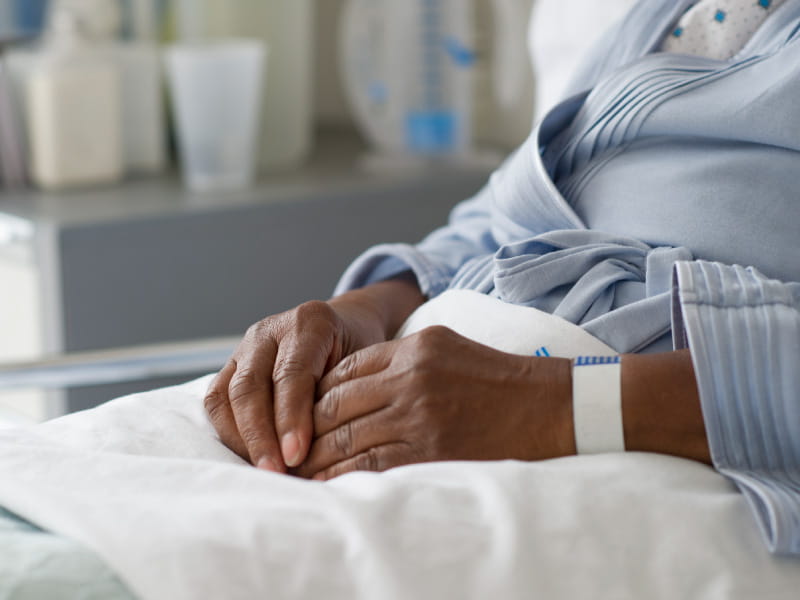People from 'socially vulnerable' counties hospitalized for COVID-19 had more heart problems, higher death rates
By Laura Williamson, American Heart Association News

Adults from the most socially vulnerable counties in the U.S. were more likely to die or experience serious heart problems when hospitalized for COVID-19 than those from less vulnerable areas – even after accounting for differences in underlying conditions or the severity of their COVID-19 infection, new research shows.
Patients from the most vulnerable areas also were more likely to be Black and less likely to receive potentially beneficial treatments for their COVID-19, according to the study, published Monday in Circulation: Cardiovascular Quality and Outcomes.
"Throughout this public health crisis, individuals who are more socioeconomically disadvantaged or from minoritized racial and ethnic backgrounds have disproportionately borne the burden of COVID-19," said lead study author Dr. Rishi Wadhera, an assistant professor of medicine at Harvard Medical School in Boston. He is also a cardiologist and section head of health policy and equity at the Richard A. and Susan F. Smith Center for Outcomes Research at Beth Israel Deaconess Medical Center.
"We need to prioritize protecting patients from socially vulnerable neighborhoods during the next surge of COVID-19 cases or the next public health crisis in order to ensure that we achieve equitable health outcomes," he said.
Using data from the American Heart Association COVID-19 Cardiovascular Disease Registry, Wadhera and his colleagues analyzed in-hospital death rates and major cardiovascular events for 16,939 adults with COVID-19 admitted to 107 hospitals across the country between Jan. 14 and Nov. 30, 2020.
Data from the registry was linked with county-level data from the Centers for Disease Control and Prevention's Social Vulnerability Index, which measures the negative impact on communities caused by external stressors on human health. The index is a composite measure of factors that include socioeconomic status, household composition, disability, minority status and language, housing type and access to transportation.
Researchers found people from the most socially vulnerable counties were 25% more likely to die when hospitalized for COVID-19 than those from the least vulnerable counties, especially during the pandemic's early stages. Those from the most vulnerable areas also were 26% more likely to experience major heart problems, including cardiac arrest – when the heart stops suddenly – and acute coronary syndrome, a group of conditions (including heart attack) characterized by a sudden drop in blood flow to the heart.
The people with COVID-19 from the most socially vulnerable counties also were more likely to require a ventilator and other types of medical support when admitted. However, they were less likely than those from the least socially vulnerable counties to receive key therapies, such as steroids. They were more likely to be covered by Medicaid and were slightly younger on average – 60 versus 62 years old – than those in the least socially vulnerable areas.
A large body of research links social and economic factors associated with the neighborhoods in which people live to the quality of their health and access to care. Because of this, Wadhera said he was not surprised to find people from the most socially vulnerable areas were faring worse when hospitalized for COVID-19.
"It did surprise us that despite being sicker when they came to the hospital, these patients were less likely to receive steroid therapy, an important evidence-based treatment for COVID-19," he said.
While the study did not explore why patients from socially vulnerable counties were more likely to die, Wadhera cited several factors that could account for the disparities. "Evidence was rapidly changing and evolving over the course of the pandemic. It is possible that medical advances did not disseminate across health systems in an equitable way. Additionally, hospitals with fewer resources in socially vulnerable neighborhoods may have experienced substantial strain during this crisis, which could also adversely affect outcomes," he said.
The pandemic has highlighted the widening social disparities faced by vulnerable communities in the U.S., said Dr. Safi Khan, a cardiology fellow at Houston Methodist Hospital who wrote an editorial that accompanied the study. "We need efforts to highlight and trigger policy changes to address these deep-rooted societal issues," he said.
Universal health insurance coverage could play an essential role in removing disparities in equitable care, he said. "In addition, we need to focus on neighborhood ZIP codes where residents face limited health care access" and opportunities to improve health, such as access to affordable, healthy foods and recreational spaces.
"During a public health crisis of this magnitude, we need to ensure that health systems with fewer resources receive the support they need," Wadhera said, "and that we pull all the public health and policy levers required to protect the most vulnerable patient populations and communities."
Wadhera said it will take interventions at the federal, state and local level to make this happen.
In addition to a patient's symptoms and diagnosis, information regarding multiple social and economic factors should be taken into account when assessing a patient's needs, Khan said.
"There is a need to develop a 'polysocial risk score' that can predict health outcomes," he said. "Such tools can be incorporated into practice and allow community-based interventions."
Editor's note: Because of the rapidly evolving events surrounding the coronavirus, the facts and advice presented in this story may have changed since publication. Visit Heart.org for the latest coverage, and check with the Centers for Disease Control and Prevention and local health officials for the most recent guidance.
If you have questions or comments about this American Heart Association News story, please email [email protected].





